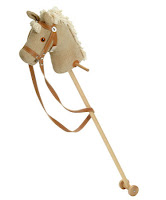At least once a year I try to go to Mexico (Baja California) for a little R&R. This trip is pura fiesta - nothing but partying . There's no better way to learn and practice your Spanish then by walking the streets all day and night, hanging out in bars and restaurants talking to anybody and everybody.
With that in mind, I thought I'd share some things I've learned about having a good time. Para que tu sepas (just so you know), some of the things in this post may be very Mexican, but are probably understood by many.
Let's get started.
Ir de parranda
To go partying. Just that simple. A parranda is a party. This is one of several ways to say party besides fiesta. In fact, most of the people I talk to rarely (if ever) use the word fiesta when they talk about going partying.
Manaña voy de parranda para celebrar mi cumpleaños
Tomorrow I'm going partying to celebrate my birthday
A Parrandón (parrandona for the ladies) is someone who likes to party. You can also say Qué parrandón to talk about a great party. Parrandero (parrandera) is also a term for someone who likes to party.
Ir a Pachanguear
Yep, another way to say you're going to party. I don't recall where I picked up this expression, but here are some examples:
¿Vamos a ir a pachanguear verdad?
We're going to go partying right?
Estoy pachangueando
I'm partying
El sábado me fui de pachanga con mis amigas
I went out partying with my girlfriends on Saturday
Es muy pachanguero
He likes to party
Panchanguero (pachanguera) is a someone who likes to party. In English we'd probably say party animal. A pachanga is a party.
Let's not forget about Ir de fiesta. It works the same way the other expressions do.
¡Vamos de fiesta!
Let's go party!
Manaña voy de fiesta para celebrar mi cumpleaños
Tomorrow I'm going partying to celebrate my birthday
Fiestero/fiestera is another way to talk about being a party animal.
I've got one more for you, and this might come as shock.
Ir de party
Vamos de party
Let's go party
While it may sound strange, this is a very, very common way to talk about going out to party. I've heard the expression vamos de party more times than I can count. And that's good news for you, because if you can't remember the the other options you will most certainly remember this one. And you'll sound authentic to boot.
Well, know that we've established that we ready to party, what kinds of places can you party at?
Un bar. Yes, a bar, just we like we say in English, but give it your best Spanish accent. You can also go to "un club". Again, just use your Spanish accent and you're golden. If you want to sound a little more Mexican, you can use the word "antro".
¿Hay un buen antro por aquí?
Is there a good club around here?
I will warn you that antro might have a different meaning in other countries. I mentioned that I like to go to antros to my friend from Peru, and she gave me a strange look. Turns out that to her an antro was not a club, but a bar, and a dive bar at that. Go figure. I think the word discoteca is probably more universal.
Well, after all of that, I'm sure you've figured out what today's expression means.
No estaba muerto, estaba de parranda
I wasn't dead, I was partying
You can also say:
No estaba muerto, andaba de parranda
This is a nice phrase you can use to get a few laughs if you haven't seen someone in a while and they ask you where you've been. Or why you haven't posted anything to your blog in almost a month.
Well, that's it for now. I've got some more party and drinking related vocabulary and phrases to share with you all in a future post, so stay tuned!
¡Hasta la próxima!
With that in mind, I thought I'd share some things I've learned about having a good time. Para que tu sepas (just so you know), some of the things in this post may be very Mexican, but are probably understood by many.
Let's get started.
Ir de parranda
To go partying. Just that simple. A parranda is a party. This is one of several ways to say party besides fiesta. In fact, most of the people I talk to rarely (if ever) use the word fiesta when they talk about going partying.
Manaña voy de parranda para celebrar mi cumpleaños
Tomorrow I'm going partying to celebrate my birthday
A Parrandón (parrandona for the ladies) is someone who likes to party. You can also say Qué parrandón to talk about a great party. Parrandero (parrandera) is also a term for someone who likes to party.
Ir a Pachanguear
Yep, another way to say you're going to party. I don't recall where I picked up this expression, but here are some examples:
¿Vamos a ir a pachanguear verdad?
We're going to go partying right?
Estoy pachangueando
I'm partying
El sábado me fui de pachanga con mis amigas
I went out partying with my girlfriends on Saturday
Es muy pachanguero
He likes to party
Panchanguero (pachanguera) is a someone who likes to party. In English we'd probably say party animal. A pachanga is a party.
Let's not forget about Ir de fiesta. It works the same way the other expressions do.
¡Vamos de fiesta!
Let's go party!
Manaña voy de fiesta para celebrar mi cumpleaños
Tomorrow I'm going partying to celebrate my birthday
Fiestero/fiestera is another way to talk about being a party animal.
I've got one more for you, and this might come as shock.
Ir de party
Vamos de party
Let's go party
While it may sound strange, this is a very, very common way to talk about going out to party. I've heard the expression vamos de party more times than I can count. And that's good news for you, because if you can't remember the the other options you will most certainly remember this one. And you'll sound authentic to boot.
Well, know that we've established that we ready to party, what kinds of places can you party at?
Un bar. Yes, a bar, just we like we say in English, but give it your best Spanish accent. You can also go to "un club". Again, just use your Spanish accent and you're golden. If you want to sound a little more Mexican, you can use the word "antro".
¿Hay un buen antro por aquí?
Is there a good club around here?
I will warn you that antro might have a different meaning in other countries. I mentioned that I like to go to antros to my friend from Peru, and she gave me a strange look. Turns out that to her an antro was not a club, but a bar, and a dive bar at that. Go figure. I think the word discoteca is probably more universal.
Well, after all of that, I'm sure you've figured out what today's expression means.
No estaba muerto, estaba de parranda
I wasn't dead, I was partying
You can also say:
No estaba muerto, andaba de parranda
This is a nice phrase you can use to get a few laughs if you haven't seen someone in a while and they ask you where you've been. Or why you haven't posted anything to your blog in almost a month.
Well, that's it for now. I've got some more party and drinking related vocabulary and phrases to share with you all in a future post, so stay tuned!
¡Hasta la próxima!








.jpg)


.jpg)


.jpg)




































.jpg)